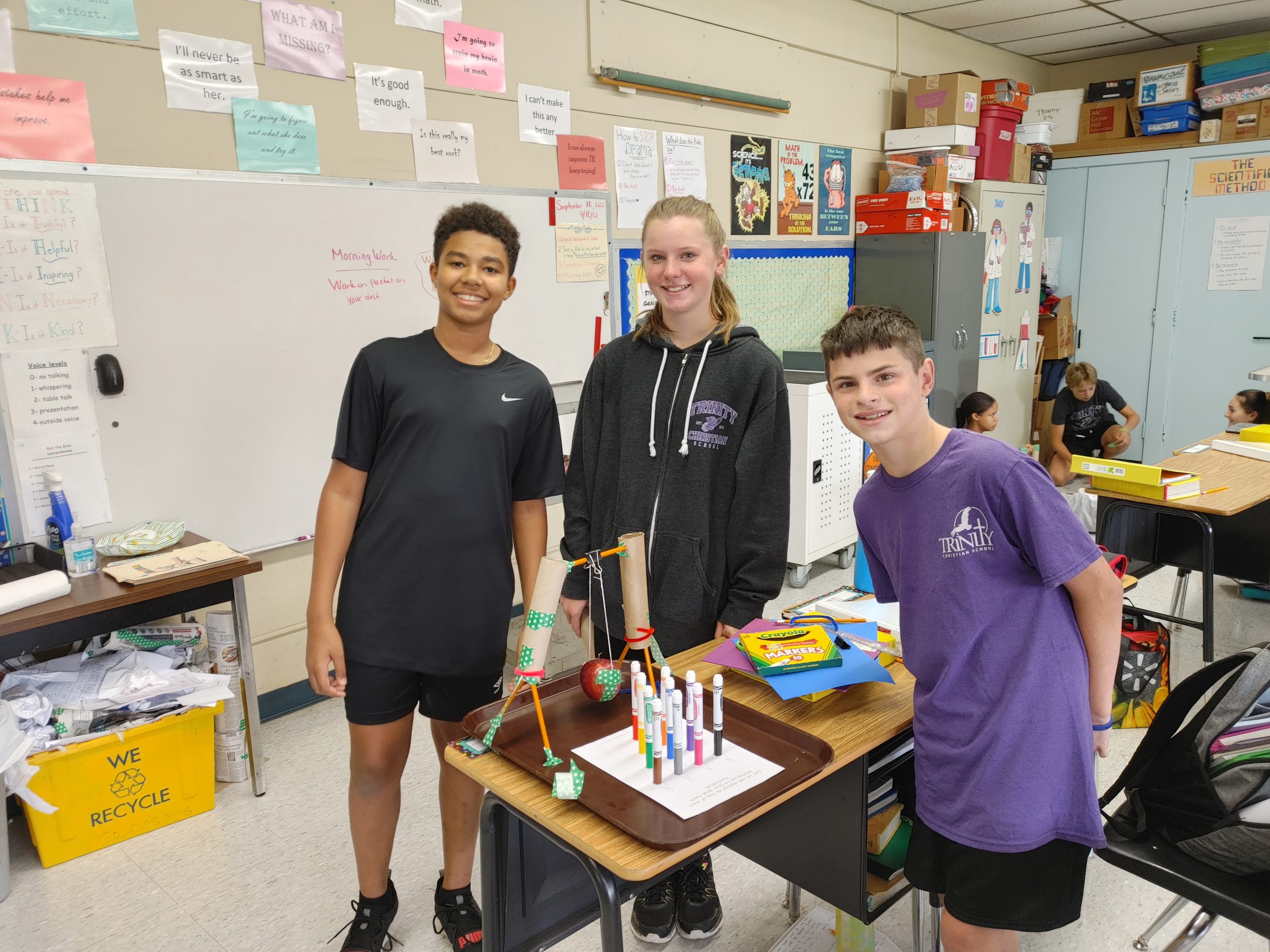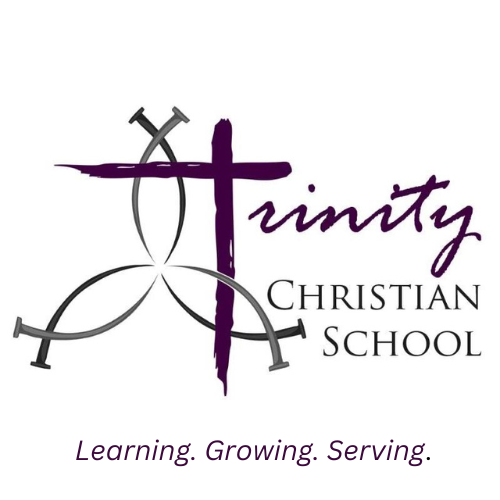
5th – 8th Grade Curriculum
5th Grade Math:
In 5th grade math, we use the Envision Math curriculum. The main skills covered are long multiplication and division, with and without decimals. We also cover decimal addition and subtraction. Fractions also take up a large part of the year. We do all operations with fractions, as well as equivalent fractions, mixed numbers, and improper fractions. Other topics covered are geometry units of measure, converting units, and analyzing data. Projects are used in addition to the textbook. Solving real-life problems is stressed in all content areas. Students often write their own word problems and do projects dealing with holidays and special events. As the year goes on, cumulative review of material is more and more prevalent, as mastery of concepts is the goal.
6th Grade Math:
In 6th grade math, we use the Envision Math curriculum. The main skills covered are operations with decimals, fractions, integers, and mixed numbers. We also cover solving equations, geometry, proportions, percent, measurement, and analyzing data. Projects are used in addition to the textbook. Solving real-life problems is stressed in all content areas. Students often write their own word problems and do projects dealing with holidays and special events. As the year goes on, cumulative review of material is more and more prevalent, as mastery of concepts is the goal.
7th Grade Math:
In 7th grade math, we use the Prentice Hall curriculum. The main concepts covered are operations with integers and rational numbers, solving equations, solving and graphing inequalities, ratios, rates, proportions, percents, geometry, surface area, volume, analyzing data, and probability. Problem-based learning is used in addition to the textbook. Solving real-life problems is stressed whenever possible. Cumulative review is very prevalent, as the goal is to add to acquired math knowledge, not replace the old with the new.
8th Grade Math:
In 8th grade math, we use the Prentice Hall curriculum. The main concepts covered are real numbers, solving linear equations, functions, graphing functions, systems of linear equations, exponents, geometry, transformations, measurement, and data analysis. Problem-based learning is used in addition to the textbook. Solving real-life problems is stressed whenever possible. Cumulative review is very prevalent, as the goal is to add to acquired math knowledge, not replace the old with the new.
Algebra:
Eighth graders that qualify for accelerated math may take Algebra. In Algebra, we use the Pearson curriculum. The main concepts covered are foundations, solving equations, solving inequalities, linear functions, systems of equations and inequalities, exponents, exponential functions, polynomials, factoring, quadratic functions, radical expressions, rational expressions, data analysis, and probability. Mastery of the concepts is the goal, as students must be able to use combinations of skills in a variety of situations to solve complex, multi-step problems. Cumulative review is very prevalent. The year ends with the students taking the New York State Regents Exam.
5th and 6th Grade Science:
Fifth and sixth grade science is taught together as one class. Different topics are covered each year. We use the Harcourt curriculum. The concepts covered are cells, reproduction, heredity, classifying living things, plants, ecosystems, earth’s surface, rocks, fossils, water cycle, weather, universe, atoms, elements, matter, energy, heat, electricity, forces, work, simple machines, and creation/evolution. The focus in science is a combination of skills and content. This is a very active class with activities and experiments being very common. Projects include building models, designing experiments, recording observations, analyzing data, recording videos, and dissections. STEM activities are incorporated throughout the year.
7th and 8th Grade Science:
Seventh and Eighth grade science is taught together as one class. Different topics are covered each year. We use the Glencoe curriculum. The concepts covered in the first year are: elements and the periodic table, atoms and atomic bonds, chemical reactions, characteristics of living things, cell structure and processes, cell division, heredity, minerals, rocks, creation/evolution, human body systems.
The concepts covered in the second year are: motion and momentum, Newton’s Laws, magnetism, buoyancy, creation/evolution, temperature and thermal energy, waves (sound and light), space interactions, and work/simple machines.
The focus in science is a combination of skills and content. This is a very active class with activities and experiments being very common. Projects include building models, designing experiments, using the microscope, collecting and analyzing data, and dissections. STEM activities are incorporated throughout the year.
5th Grade ELA
In fifth grade we use the McGraw Hill series that encompasses all aspects of reading and writing. Students complete daily grammar lessons, both formal and informal writing pieces throughout the week, and are exposed to a wide variety of genres for reading comprehension practice. In between units in the textbooks and workbooks, students complete novel units that reinforce skills and strategies previously taught and are accompanied by fun extension activities related to the story. Some of these novel units include Number the Stars, Holes, Hatchet, and The Lion, the Witch, and the Wardrobe.
6th Grade ELA
In sixth grade we use the McGraw Hill series that encompasses all aspects of reading and writing. Students complete daily grammar lessons, both formal and informal writing pieces throughout the week, and are exposed to a wide variety of genres for reading comprehension practice. In between units in the textbooks and workbooks, students complete novel units that reinforce skills and strategies previously taught and are accompanied by fun extension activities related to the story. Some of these novel units include Number the Stars, Holes, Hatchet, and The Lion, the Witch, and the Wardrobe.
7/8th ELA
In seventh and eighth grade, we use the Prentice Hall series to provide our students with a balanced literacy program. Students are exposed to variety of genres throughout the six units that are covered over the two year course. Between units in the textbook, we complete novel units from different genres and practice reading comprehension strategies accompanied by fun extension activities. Some of these novel units include Walk Two Moons, A Long Walk to Water, Out of the Dust, and The Giver. In addition, students complete many writing pieces throughout each quarter including informal creative writing pieces and formal pieces such as thematic essays.
5th/6th Social Studies
Students spend two years covering world history through the Prentice Hall textbook, History of Our World. Students begin with the beginnings of human society and cover the rise and fall of major civilizations such as Mesopotamia, Rome, Greece, Egypt and many more. In between chapters, we focus on geography and cover both local and world maps, along with thematic maps.
7th/8th Social Studies
Students spend two years covering American history Prentice Hall textbook, The American Nation. We begin with colonization and continue all the way through the early twenty-first century. Students also learn how to analyze political cartoons, assess primary and secondary sources, along with looking for connections to current events. In between chapters, we focus on geography and cover both local and world maps, along with thematic maps.



